Pets & Livestock
Diatomaceous Earth as a Supplement for Cattle Feed
The practice of incorporating Diatomaceous Earth into cattle feed has been studied, researched, and found to be beneficial on a number of levels. Upon the treatment of cattle with DE milk production was measurably increased and harmful parasites were decreased. This includes internal parasites such as worms as well as external parasites like Warbles. These health benefits were achieved without the expected necessity of a feed increase or the use of potentially costly and dangerous chemicals. It has also been studied and found that Diatomaceous Earth residue does not pass into the milk of dairy cattle when the proper dosage is used and is not toxic to humans.
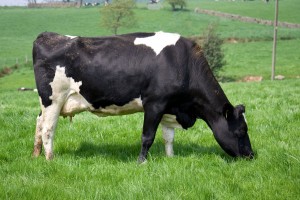
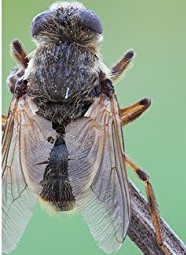
An initial supplemental treatment of cattle with Diatomaceous Earth and then a continued feeding at a reduced dosage has been shown to be an extremely cost effective solution while remaining an organic and natural alternative to harsher treatments which are often not approved by the Queensland Government. The treatment for DE on cattle demonstrates a positive potential for the natural control of detrimental parasites that often plague cattle and results in a significant reduction in veterinary bills. Another advantage of Diatomaceous Earth is that it is impossible for pests to build an immunity to its effects.
We offer Regular Food Grade Diatomaceous Earth, which is suitable to add to dairy cattle feed. It is completely organic and natural being derived from fossils of single celled microscopic plants known as phytoplankton diatoms. It is never over processed with any additives or chemicals. We never treat it with artificial heat and the only processing it undergoes is crushing and milling. It is the sorted and packaged for our clientele. This ensures that is suitable for mixing with fed for dairy cattle.
Using Diatomaceous Earth with Horses
Diatomaceous earth is the fossilized remains of tiny algae organisms called diatoms. Mined and milled from lakes and oceans around the world, diatomaceous earth is made mostly of silica, but is also composed of other valuable trace minerals like magnesium, calcium, sodium, and iron. Diatomaceous earth’s microscopic structure resembles tiny little scrubbers making it a perfect, natural abrasive and exfoliant as well as an effective internal cleanser.
Diatomaceous Earth as Natural Pesticide For Horses
Diatomaceous earth can be used to care for your horses in several ways. First, it is a natural insecticide. Diatomaceous earth is exceptionally porous making it effective for drying wet places out. When diatomaceous earth is mined and processed it is ground into a powder. Spreading diatomaceous earth in areas of your barn where moisture collects can dry out breeding beds where many pests reproduce. Fly larvae is especially susceptible to diatomaceous earth, for example. Diatomaceous earth can also be applied on your barn floors, in nooks and crannies, as a preventative measure. After mucking your barn, spread diatomaceous earth to keep your barn dry and pest free.
Additionally, spreading diatomaceous earth around your barn will cause pests to come into contact with diatomaceous earth’s sharp edges. These sharp edges shred insect exoskeletons. Shredding an insect’s exoskeleton causes it to lose moisture eventually dehydrating it to death. Many horse-keepers hang burlap sacks full of diatomaceous earth around their barns. Horses can rub against these sacks, coating themselves in diatomaceous earth, to fight against pests on their skin.
Currently, one of diatomaceous earth’s most common uses is as what is called an anti-caking agent or flow aid in agricultural feed. When wet grain, corn, and other types of feed are stored, they often stick and clump together. Diatomaceous earth is added to the feed, in an amount known as food grade, to absorb moisture and prevent the feed from sticking, or caking together. Agricultural feed is often pressed into pellets and diatomaceous earth works as a good pelleting aid. Simply, it helps feed turned into pellets maintain its shape.
Food Grade Diatomaceous Earth And Deworming
Food grade diatomaceous earth may also be used for deworming horses. Food grade diatomaceous earth is the type recommended for ingestion for your horse, cattle, pigs or other animals & pets. When eaten, very little of the diatomaceous earth is absorbed into the body and diatomaceous earth’s sharp, fine microstructure acts as a scrubbing solution for horses’ digestive tracts. As diatomaceous earth works through a horse’s intestines it slices through intestinal worms - killing them, and shredding them so they may be passed out of the digestive system.
Again, when feeding diatomaceous earth to your horse, make sure it is food grade. Recommended doses vary for each individual horse and is largely dependent on body weight. A common suggested rate of food grade diatomaceous earth is 1 cup per 450 kilos of horse body weight. A higher worm count may require a higher dosage. A minimum 60 day treatment plan is suggested and you should check fecal worm counts at least every 30 days. If fecal worm counts do not improve, consider increasing their diatomaceous earth dosage. Similarly, if fecal worm counts do improve, you can consider reducing the dosage. Many horse-keepers continue administering a small dose of diatomaceous earth to their horses diet even after deworming has been achieved.
Diatomaceous earth has no offensive odor or texture so mixing it directly into your horses’ feed works fine. Horses will eat it without noticing its presence.
Diatomaceous Earth Horse Feed additive
Diatomaceous earth has been known to improve digestive health and give animals shinier, healthier coats, which makes it an excellent feed additive for your horses. Ranchers, farmers, and pet owners alike have many stories of the benefits of adding this silica-rich supplement to animal feed.
Another benefit to adding DE to your horse feed is that it acts as a natural preservative. Its porous nature allows it to absorb moisture that would otherwise cause feed to mold or rot, helping the feed last longer than it would otherwise.
Follow our guide below to add DE to your horse's diet.
You will need:
- Food Grade Diatomaceous Earth
- A Food Scale
- A scoop
- Horse Feed
Instructions:
Step 1
Make sure you are using food grade DE. Non-food grade DE can be dangerous to you and your horses if not used for its intended purpose.
Step 2
The standard ratio for feeding animals DE is roughly 2% of the feed's weight, which is roughly 3 oz. of DE for every 10 lbs. of feed, or 2 lbs. of DE for every 100 lbs. of feed.
After taking note of the amount of feed you are going to give your horse, use the 2% rule to work out the weight of DE and measure it out on the scale.
Diatomaceous Earth: An Effective Organic Grain Storage Solution
One of the most popular small and large scale uses of Diatomaceous Earth is as an effective grain storage solution. Both privately and commercially owned grain facilities have found great success with DE as an insect deterrent. Many markets will not accept grain which has been stored using harsh chemical insecticides. It is extremely important to understand which methods are acceptable and unacceptable in any given market.
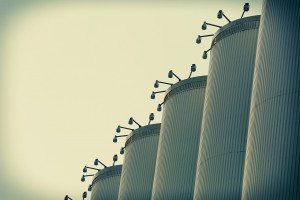
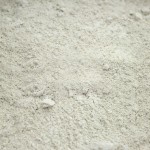
Diatomaceous Earth which is food grade is not harmful to humans when used in grain storage. Providers must implement some sort of protective measure as insect population in grain storage is left unchecked the grain quickly becomes unsellable or even usable. Diatomaceous Earth is widely used throughout Australia as an effective solution for grain storage, especially in the dryer regions. It may be distributed as a slurry mixture or as a dry inert dust.
Our Food Grade Diatomaceous Earth is made up of contains less than 0.1% crystalline silica.
This has been certified by the Queensland Government. Our DE is derived from non-toxic amorphous silica. It contains no harmful additives and is chemical free. The only manufacturing processes that we subject our DE to is milling; crushing; sorting; and packaging. We do not artificially heat treat our Diatomaceous Earth only sun dry it. This makes it safer for grain facilities; farms; gardens; and homes. Instead of spreading toxins, DE absorbs the waxy exterior of pests and insects effectively destroying them. see this artical which demonstrates the effectiveness as compared to chemical treatment.
It is extremely important to use the food grade Diatomaceous Earth for grain storage and never the grade which is sold for swimming pool filters. While all of our DE is food grade quality, it is available in a variety of milled particle sizes to suit all grain storage as well as a wide variety of other needs. Grades available through our website are:
• No-Grit Superfine
• Regular Grade
• Poultry / Bird Feed Supplement
• Agricultural / Coarse Grade
Dominate Household Pests with Diatomaceous Earth
Diatomaceous Earth is a non-toxic alternative which has a wide variety of domestic and business uses. This natural substance is derived from milling the fossilized remains of microscopic plankton or algae. One of its many uses is to combat domestic pests in the home. It is nearly impossible to live absolutely pest free anywhere in the world. These milled particles have sharp edges which are not harmful to humans or animals, but destroy insects that plaque homes. The piercing edges puncture the exoskeleton. The result is insect dehydration and death to all pests which make contact with the dust. Peta suggests using Diatomaceous Earth to battle fleas as a cruelty free method.
DE may be sprinkled on infested furniture and carpets. The dust should remain as long as possible; however, the area should not be vacuumed for at least 60 minutes. In the event that it cannot remain for several days, the process should be repeated several times. It may also be dusted into crevices and holes where bugs hide during the day.
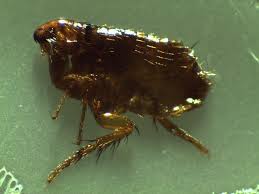 Household pests are a fact of life no matter how clean the home is. Insects may find transport to the home through deliveries and/or groceries, especially produce, as well as through the tiniest holes in the screen. Action should be taken immediately upon the first sighting of critters lest the issue spirals out of control. Where one is spotted many more are seeking refuge in dark spaces. A few of the other culprits which Diatomaceous Earth is effective against include ants, cockroaches, flies, spiders, and termites.
Household pests are a fact of life no matter how clean the home is. Insects may find transport to the home through deliveries and/or groceries, especially produce, as well as through the tiniest holes in the screen. Action should be taken immediately upon the first sighting of critters lest the issue spirals out of control. Where one is spotted many more are seeking refuge in dark spaces. A few of the other culprits which Diatomaceous Earth is effective against include ants, cockroaches, flies, spiders, and termites.
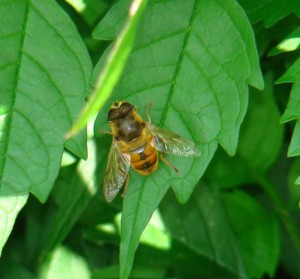
Consumers may find several products to use in the battle against household pests at Diatomaceous Earth Online. DE is available in an easy to distribute aerosol can called Rapelle Bugs.
The product is also offered in several milled sizes including No Grit Superfine and our latest DE-Micro10 Australias' finest DE. Visitors who purchase these may find the the coupon code to get a substantial discount from the price of the handy Diatomaceous Earth Applicator also available through the DE Online website. All of our natural products are 100% safe and effective.
Safe Parasite Control for Pets and Homes

Many families are returning to natural methods instead of harsh chemicals to care for their homes. It is being well publicized that many of the chemical options available on the market today are not good for, if not hazardous to, individuals’ and their fuzzy companions’ health. One of the biggest issues pet parents deal with is parasites which include intestinal worms, fleas, and ticks. A natural solution many are turning to is Diatomaceous Earth. DE is the microscopic fossils of diatoms or plankton which lived thousands of years ago. Diatomaceous Earth is currently being used for many purposes in both domestic and industrial life. This substance is milled into tiny particles which perforates insect bodies causing dehydration and death.
Small amounts of DE may be safely fed to canines and felines with their regular diet on a consistent basis, or for at least 30 consecutive days, to eliminate internal parasites such as worms. It is important to feed them only the recommended supplement as directed by weight and discuss this with the vet to ensure that particular companion does not have other underlying health issues.

Large dogs over 50Kgs 1-2 heaped tablespoons per day
Large dogs over 35kgs 1 tablespoons per day
Medium dogs 15-35kgs ½ – 1 tablespoon per day
Small dogs under 15kgs 1 teaspoon per day
Puppies ½ to 1 teaspoon per day
Cats 1 teaspoon per day
Kittens ½ teaspoon per day
Pet bedding, living areas, and carpets can be dusted with Diatomaceous Earth to help rid homes of fleas and ticks. The dust should remain on the carpet for no less than one hour before vacuuming to be effective. The longer it remains, the more effective it will be. It is necessary to repeat this process several times for a least two weeks. Parasite eggs can hatch in as little as two days and for up to two weeks.

It is important to remove the pet from the area while dusting it and wear a simple filter mask which may be found at any department, hardware, or home improvement store. It is not hazardous when it is consumed; however, it can cause a small amount of irritation, if it is inhaled by animals or humans.
Diatomaceous Earth Online offers several food grade types of this product, all of which is safe and non-toxic. Rapelle Bugs is available in a handy aerosol can. We also offer No-Grit Superfine Diatomaceous Earth Powder in a convenient 1kg bag. A Dusting Applicator for DE Powder may be purchased from our website.
Using Diatomaceous Earth with Poultry
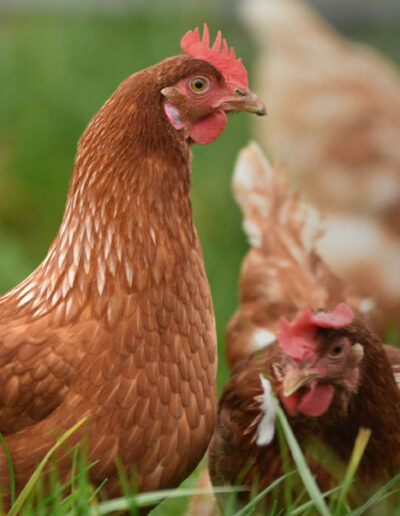 Are you looking for a solution to extend a healthy and pest-free life to your chickens?
Are you looking for a solution to extend a healthy and pest-free life to your chickens?
We can supply you a high-quality and pure diatomaceous earth from Australia that is sourced from natural freshwater. Our diatomaceous earth for chickens offers a multitude of benefits and can enable you to provide the best possible care to your feathered friends.
Benefits of diatomaceous earth for chickens:
Diatomaceous earth is quickly becoming an essential material for raising poultry. This naturally occurring substance was formed millions of years ago from microscopic, hard-shelled algae called diatoms that became fossilized. For modern use, diatomaceous earth is a natural pesticide and organic food additive that can keep mites off chickens, cleanse their digestive tracts of internal parasites, and provide essential minerals to help chickens lay bigger, healthier, more nutritious eggs.
A Natural Pesticide
Diatomaceous earth’s micro-composition makes it uniquely suited for combatting common poultry pests. The fossilized remains of diatomic algae come with incredibly sharp (but microscopic) edges. These edges attack mites, lice, fleas, ticks, slugs, snails, and even digestive-tract worms by working their way through and cutting the outer shell or layer of the insects’ bodies. This process causes the insects to lose their moisture - killing them from dehydration in a matter of hours. Diatomaceous earth is also extremely porous and is very effective at drying wet surfaces where pests may lay their eggs. Diatomaceous earth is so good at drying things out, in fact, it is sometimes used to soak up industrial-sized toxic spills.
At the same time, it’s completely harmless to humans, chickens, and other animals.
Applying Diatomaceous Earth in Your Coop
Diatomaceous earth is an inexpensive, natural alternative to chemical pesticides. Diatomaceous earth is easy to physically apply to your chickens’ home. First, clean your coop, scrub out all the cracks, door frames, and window sills, and remove old, dirty litter. Spread diatomaceous earth in your flock’s nesting boxes, rub it along the roosts, sprinkle it across your coop’s floors, and pay special attention to your coop’s nooks and crannies. There’s really no wrong way to spread diatomaceous earth - many simply use a plastic scoop as a light sprinkler.
The important point to remember is that diatomaceous earth must come in contact with the insects to kill them, so make sure you spread diatomaceous earth wherever the pests might concentrate. After you’ve spread diatomaceous earth across your coop, replace the old litter with new, clean litter.
Additionally, you can spread diatomaceous earth in your chicken’s favorite dust bathing areas as another protective measure. Chickens love rolling around in dry dust as a way to maintain their feathers and scrub their skin. Adding diatomaceous earth to their favorite dust bathing spots, allows the chickens to thoroughly coat themselves in a protective coat of a natural pesticide. The coat acts as something like armor against fleas and lice.
There are some concerns about the inhalation of diatomaceous earth (or any sand for that matter) both by you and your chickens. This concern comes from the high-silica content of sands, pool grade DE and calcined versions of the product which should NEVER be used. These contain high quantities of Crystalline silica that are known to can cause silicosis. However you should only be purchasing good quality amorphous silica and it should contain less than 2% crystalline silica and is a food grade. It is however always sensible work in potentially dusty situations, like applying diatomaceous earth, it is recommended you wear a mask.
Diatomaceous Earth as Nutritional Supplement for Chickens
Food-grade diatomaceous earth has long been added to agricultural feed both to keep the feed from caking and free from unwanted worms. Just as diatomaceous earth works against larger external pests like ticks, mites, and fleas, adding a 10 to 15% volume of diatomaceous earth to your chickens’ diet works against microscopic parasites as well. Diatomaceous earth particles are small enough, and yet hard enough, to pass through chickens’ intestinal walls cleansing their digestive tracts of parasites like worms.
Diatomaceous earth is a good nutritional supplement in the daily diets of chickens. It’s largely composed of silica, an essential dietary mineral. It also contains other trace minerals like aluminum and iron oxide. Hens who eat a diet containing a daily amount of diatomaceous earth are significantly heavier, eat more feed, and lay more eggs than hens who do not. Eggs produced by hens regularly consuming diatomaceous earth have also been found to contain more yolk and more albumen than eggs laid by hens who do not.
If you would like to know more about our diatomaceous earth for chickens please contact us by phone or use our contact form here so you can enjoy the excellent benefits diatomaceous earth has to offer.
